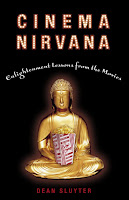This 83-year-old Disney movie was the first full-length animated feature. If you haven't seen it since your childhood, you might want to give it another look. It is beautiful and sincere and still relevant to its intended audience, children and their parents.
The plot generally follows the lines of the familiar Grimms' fairy tale, but it was customized to appeal to young viewers, chiefly with the addition of very nice birds and forest animals, plus seven dwarfs -- small, bald, bearded men, each with a childish personality quirk that is revealed as they and Snow White get to know each other.
When the evil stepmother sets out to kill Snow White, the animals and dwarfs join forces to save her. This disharmonious part of the movie, and its resolution, are much shorter than its satisfying (to children) set-up. Of course, all ends well.
What is remarkable is that the film gratifies the basic wishes of children -- for people to be nice and to be accepted by nice animals, for good to triumph and, along the way, for silly characters like the dwarfs to provide laughs that relate to children's own experiences.
Moviemakers with Small Children
It's tempting to guess that the birth of Walt Disney's first child in 1933 informed some of the sincerity of Snow White and its broad appeal to families of that time.
In a similar way, think of the first Toy Story movie, released in in 1995. The film came from Pixar, then owned by Steve Jobs, who married in 1991 and had his first child with his wife the same year. Similarly, Pixar's chief creative officer became a dad in 1992. The Pixar team included several other parents raising young families.
Toy Story didn't reach back to Grimms' Fairy Tales for material but rather to the fond memories of its creators' youth -- a cowboy hero, plus Slinky Dog, Mr. Potato Head, Etch a Sketch and Tinker Toys. The sharing of such nostalgia must have struck a chord with other Boomer parents' progeny, the so-called Boomlet that peaked in the mid 2000s, and no doubt gratified their parents as well.
I don't know who is running Pixar now (it was acquired, like all franchises, by Disney) but my sense is that Pixar films are little less sincere these days, possibly because they are made by people less likely to have small children around the house.
In addition, I'd guess that films like Snow White, as long as they are available on Disney Plus or other streaming services, will resonate longer because their themes are more universal and less reliant on consumer products.
This is one reason to be happy that films like this one still can be found on streaming services.
And by the Way

I was motivated to see this movie by the book at right, an unusual one by a man named Dean Sluyter. The subtitle is Enlightenment Lessons from the Movies.
The author, a self-described old hippie and longtime Buddhist, treats film as literature and discusses many famous movies, interspersing his analyses with religious observations drawn from sources as varied as Eastern religions and the New Testament, and also with bits of autobiography. The combination may sound odd, but it worked for me.
The first movie discussed in the book is Snow White. Sluyter opens by noting that the heroine is perhaps not as appealing to current tastes as, say, Mulan or Moana -- "no talents but housekeeping and no interests beyond pining away for that Special Someone who will someday come and solve all her problems."
(Ed. note: The prince of Snow White's dreams isn't exactly an action hero himself.)
Sluyter contrasts Snow White, who views her image in the rippled reflections of a well, with the evil Queen/stepmother who obsessively asks a mirror for reassurances of her beauty. The writer suggests that Walt Disney may not have been a dharma devotee but that he was thinking along similar lines.
From the essay:
The words narcissism and narcotic come from the same root, and the Queen is hooked, a mirror junkie with an expensive habit. The plot is set in motion when the Spirit puts Mommie Dearest in a rage by revealing that Snow White is now fairest of all.
The further discussion of Disney and the care he put into the making of this film, and then how Disney films evolved from there, is also engaging.
In fact, Cinema Nirvana has many thoughtful discussions. If you find yourself housebound and tiring of the tedium, watching classic movies and reading what this writer has to say about them could be a helpful diversion.



